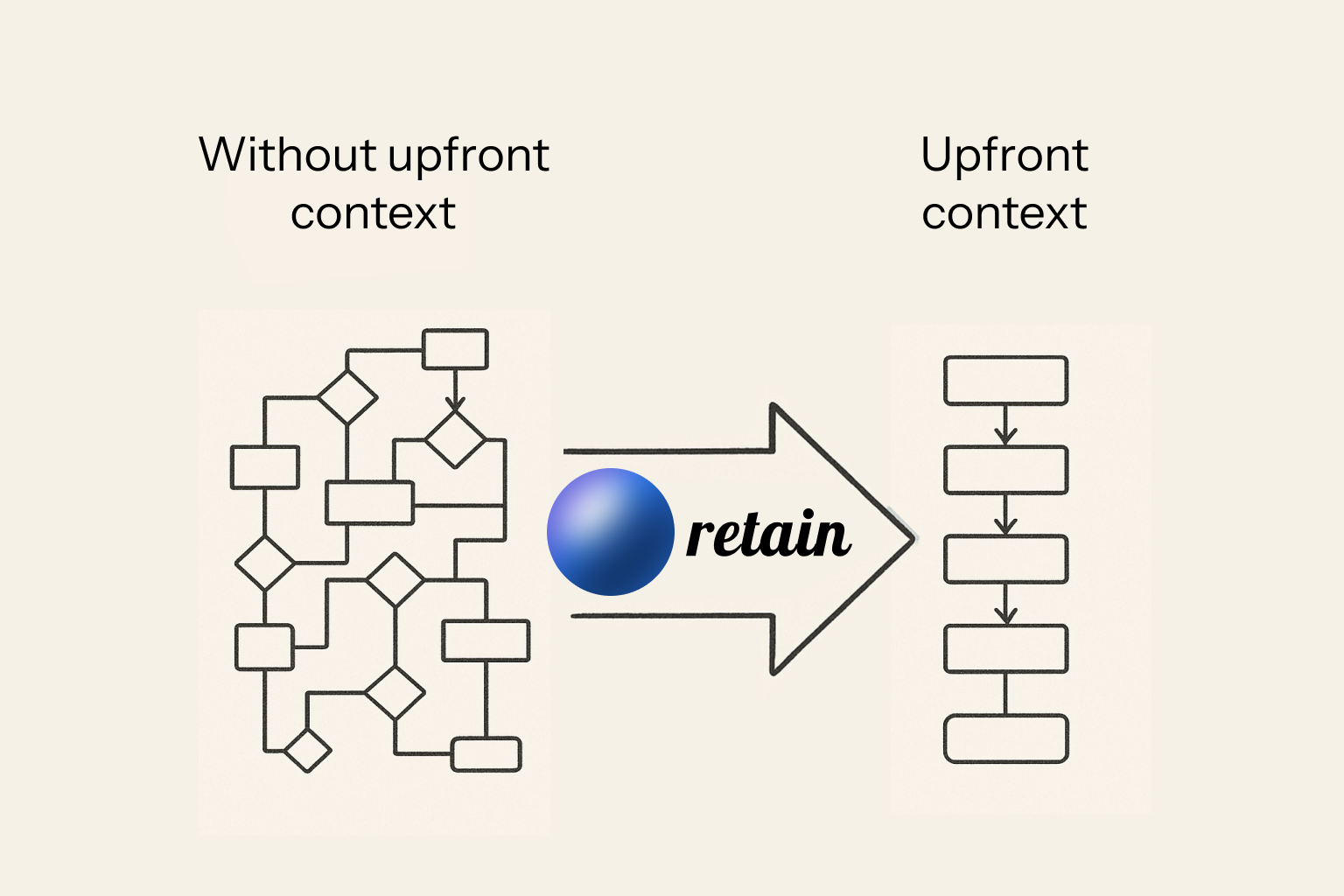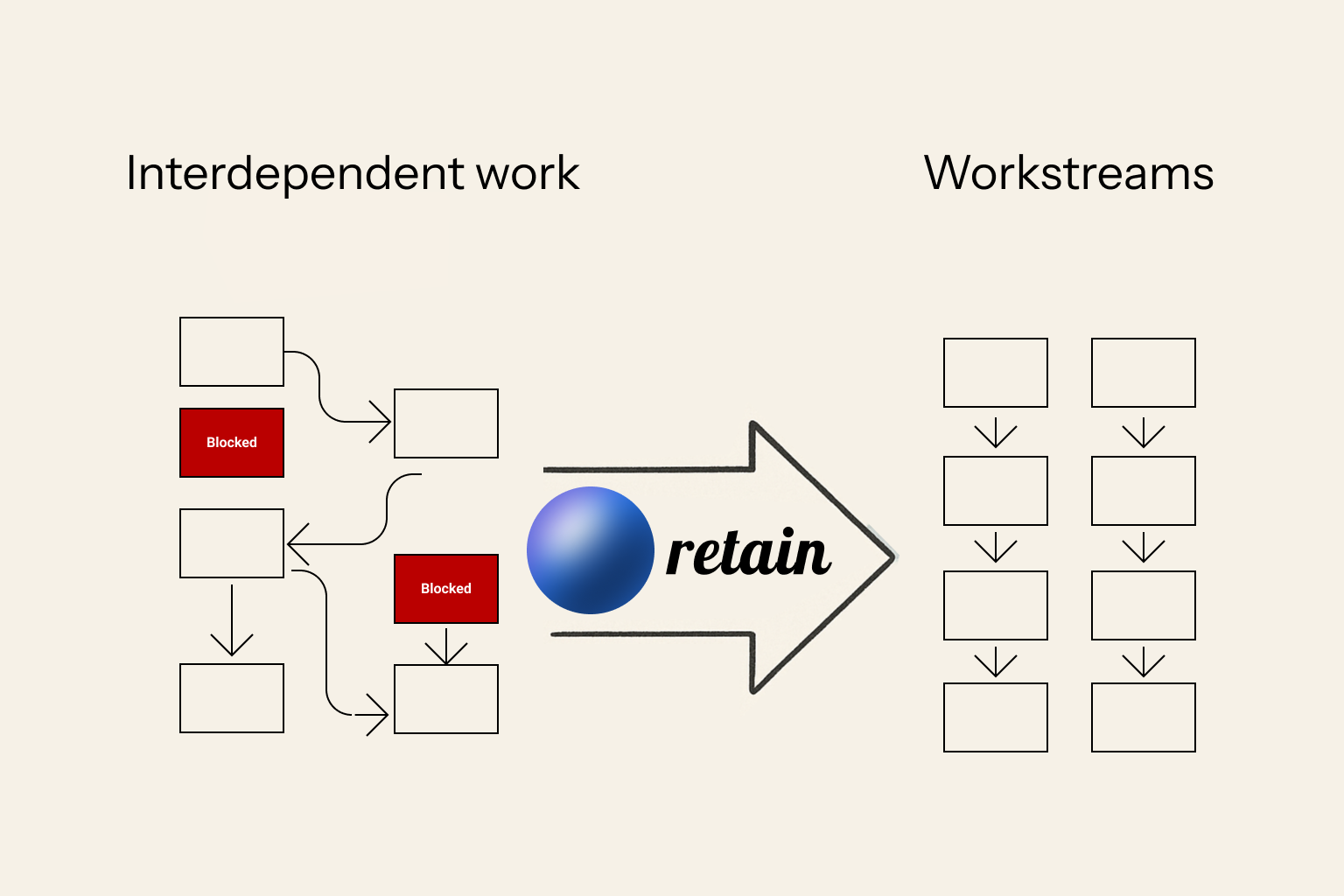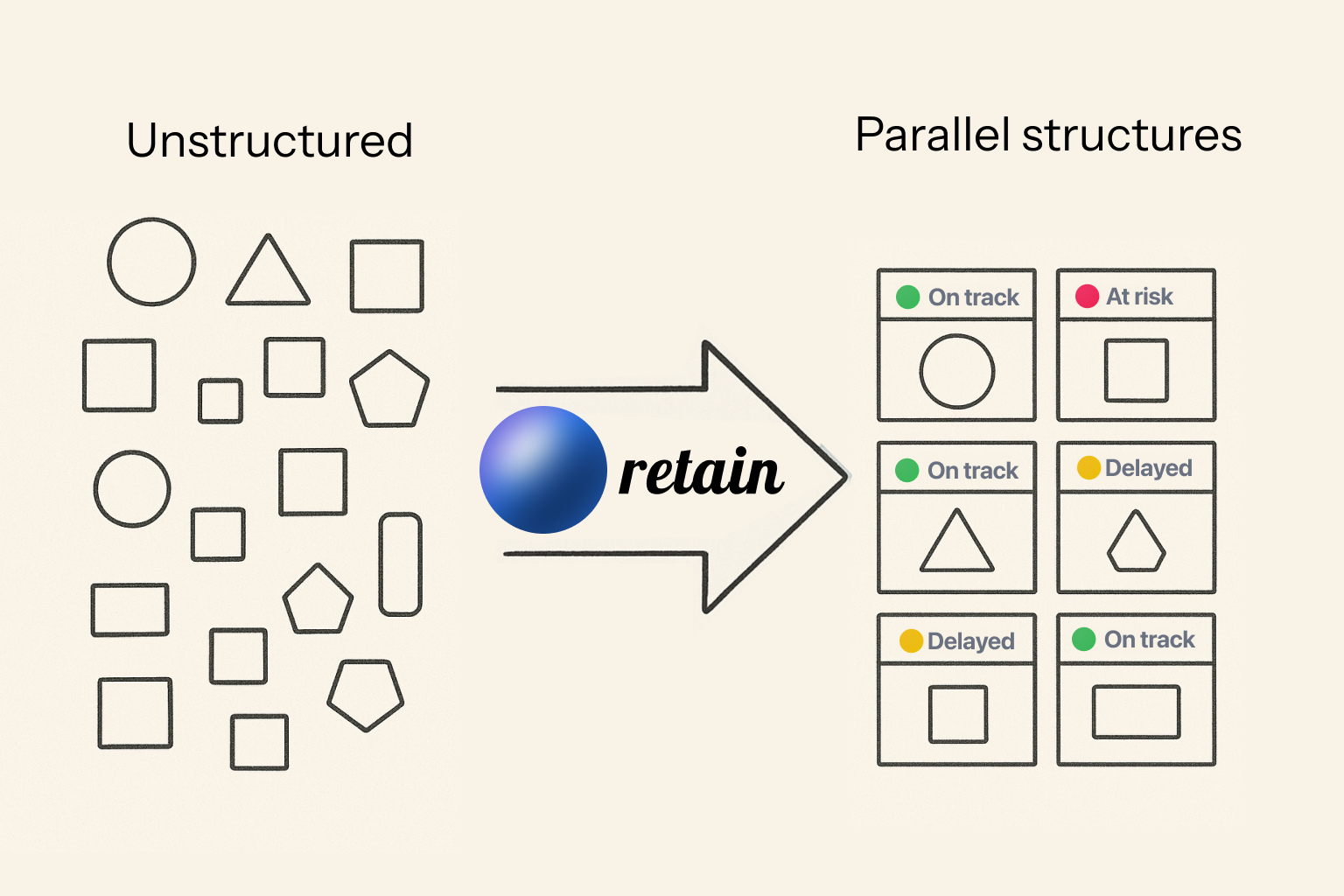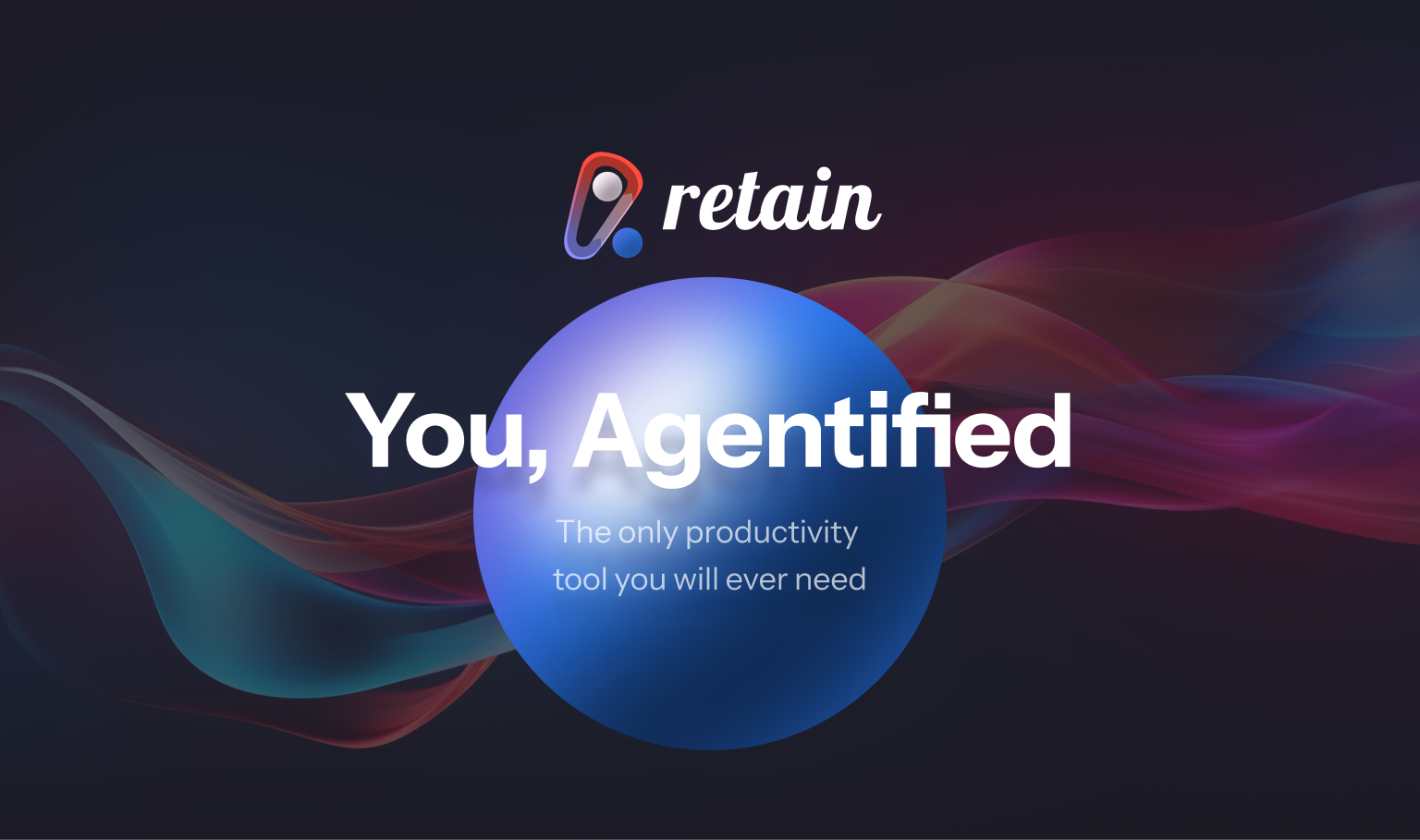Retain Beta: You, agentified
 Ryan Rapp
Ryan Rapp
Today I am thrilled to announce Retain (Beta):
An AI agent app that turns chaotic work dynamics into organized, prioritized workstreams.
Mac only, Apple Silicon (M1+) required.
The information overload problem

For years I watched organizations, my workplaces included, buckle under their own complexity. Execs and managers were tasked to juggle strategic priorities, shepherd dozens of initiatives, and support hundreds of internal teams while bouncing between 500+ tools. At Amazon, where I managed real-time ad systems that spiked past a million requests per second on Prime Day, the work was exhilarating, but the dynamics were overwhelming. Coordinating thousands of simultaneous initiatives inside one of the world’s largest companies demanded ruthless prioritization, crisp ownership lines, and obsessive detail management. Yet even the most careful launch plans would collide at the 11th hour, triggering cascades of delays or cancellations. Watching industry-leading operators turn this chaos into shipped work made one thing obvious: execution happens in spite of today’s software, not because of it. Our tools encourage incremental pings and fragmented artifacts, not deep work or flow. The missing piece is disciplined capture and organization: turning every decision, dependency, and deliverable into a coherent, queryable memory.
As we entrust more of our business to AI automate business functions, we have to be intentional about what we’re asking these systems to do. They must absorb context, sequence work, and close loops rather than create new coordination burden and overhead. Retain is designed to blend into the workflow and effortlessly move workstreams forward with clarity and traceability.
Principle 1 - Gather context upfront, not incrementally

Whether it’s a person or an AI agent, execution turns into a slog when context isn’t complete and accessible. Nothing slows momentum like back-and-forth loops such as asking “Can you resend that deck?” “Who owns this?” “What did we decide last quarter?” across a dozen people and systems. A concise background brief that recaps what’s been tried, what’s worked in your org, what R&D says, and practical knowledge from peers in your network can save weeks later. Doing the synthesis up front pays for itself many times over.
How Retain applies it: Retain auto-builds and maintains briefs that enable swift execution. Your meetings, emails, and calendars become an indexed memory you can query in plain English (e.g., “Show me the rationale for the Q4 pricing change”). With context handled, you can flow through your work without roadblocks instead of mired in back-and-forths.
Principle 2 - Separate workstreams to minimize congestion

Have you ever worked at a company when every org is simultaneously trying to hit a big EOQ goal, unaware of the interdependencies? When a company tries to land ten initiatives at once, they collide: deals slip instead of closing, deploys get rolled back, and finance is left explaining a revenue miss. The fix is to carve clear execution lanes - tight scopes, explicit dependencies, and capacity-aware sequencing. This allows teams and individuals to complete their work quickly without elbowing each other.
How Retain applies it: Even in this beta version, Retain already helps you see who owns what and when key work is scheduled—using the signals you already produce (meetings, emails, calendars). Retain helps by making those lanes visible: who’s doing what, why it matters, and what it blocks. All served up without disrupting your flow state.
Principle 3 – Utilizing parallel structures

Owning a large scope means bouncing between business development, budgets, hiring, migrations, each with its own details and timelines. The challenge of context switching isn’t the breadth itself but rather a lack of a consistent frame to hold it all. When every stream is organized in a parallel structure, including the same fields, same status cues, and same review cadence, your brain (and your agents) can scan, compare, and act without re-orienting every time. “Hiring: green. Budget: yellow. Database migration: delayed.” One glance provides a shared understanding.
General-purpose AI tools usually miss this. Each answer shows up in a different format, with different fields, in a different order. It feels like talking to a rotating help desk—capable people, but no shared template. While the AI models are more than capable, the product design is out of step with how execution actually happens: through repeatable structures.
How Retain applies it: Retain groups work into consistent “workspaces” (e.g., Product Roadmap Hub, Financial Overview). Within a workspace, information follows the same schema—so context switching is fast for you and any AI agents you delegate. When you need the bigger picture, the Agenda view pulls key signals from across workspaces without breaking that structure.
One notable way Retain utilizes parallel structure is through organizing your work into workspaces such as Product Roadmap Hub, or Financial Overview. This makes context switching a breeze for you and the AI agents you are tasking. Retain AI can work within a workspace for maximum depth and accuracy, or it can work on the Agenda tab, which aggregates information from all workspaces.
Enter Retain: An agentified version of your professional self

Retain unifies the signals you already generate - meetings, emails, calendars - and turns them into actionable memory. Simply ask Retain's agent “What did we decide about Q4 pricing?” or “Show me open action items from the last three exec syncs,” and get direct answers.
Retain's mission is to leverage this AI renaissance to transition past an era of over-reliance on flow-disrupting pings, and operate within cleanly designed workstreams.
If you'd like to join me on this journey, try out our Beta and let me know what you think.
Ready to boost your productivity?
Try SecondBrain and experience the power of AI-driven productivity tools.


